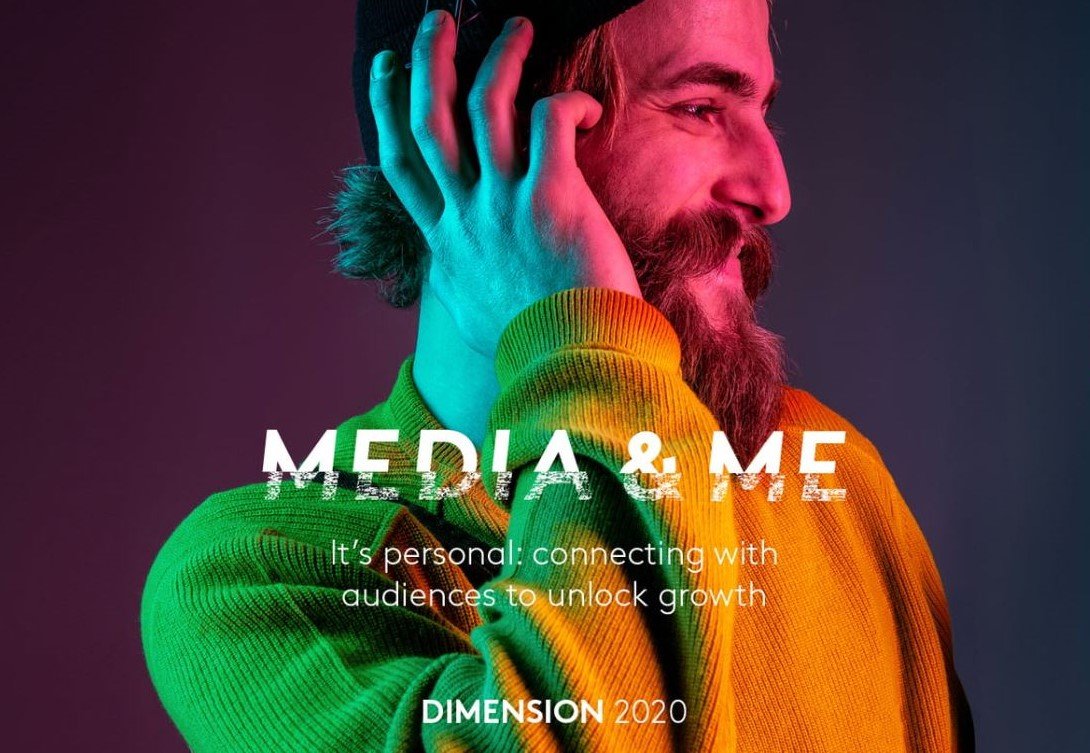#Dimension2020: Media And Me – Winning In A Personalized Media World
Dimension is Kantar’s latest thinking on some of the biggest communications planning, buying and measurement topics. This year’s study, titled ‘media and me’, investigates how brands, media owners and agencies can win in an increasingly personalized media world by connecting with audiences to unlock growth.

Unlocking growth and maximizing ROI in a lockdown world where personalization is everything means we need to understand the implications of the increased choice and intense competition in the TV and video landscape.
Our interviews with 8,000 consumers and some of the world’s leading TV research and advertising minds reveals that the streaming wars are raging, having swiftly broken many records with more of the world a captive audience under lockdown than ever before. The new normal brings this into much sharper focus, but media owners need to unlock what’s really behind current consumer attitudes to boost growth now and in future.
Demystifying The Stickiness Of Streaming Services In A Complex, Disrupted Market
Alejandro Betancourt, LATAM Brand Director at P&G, says to remember who’s boss. In the era of personalisation and streaming video on demand (SVOD), the consumer is king. Whatever you do, don’t bite these hands that feed.
Consumers have more options than ever before, but they’re also concerned about data privacy. While the fieldwork for Dimension 2020 was conducted before COVID-19 impacted us, the fundamentals remain unchanged.
But let’s hit rewind and set some context: The traditional TV broadcast landscape has changed remarkably with the rise of streaming and subscription-based content models. So, while traditional linear broadcast video is still responsible for the biggest chunk of time spent on video, streaming through a web-connected device has also now become mainstream in a field of extreme competition where players need to build long-term engagement. The control is now all in the viewers’ hands.
No longer a case of sitting down together as a family to watch the latest episode of the most popular show of the moment on a set date at a set time, the individual viewer decides what they watch, when they watch, the device they watch on, and the subscription they’re willing to pay for. Competition is increasing rapidly globally, with 75% of our respondents subscribing to a single SVOD service like Netflix or Hulu and as many as 44% of households have subscriptions to two or more services showing a skew towards younger target groups. But pockets are not bottomless and feeling especially tight as lockdown continues, so a degree of consolidation is inevitable.
In this domain, you need to know what both your subscribers and non-subscribers are viewing to avoid customer loyalty speedbumps. For example, 43% of connected consumers feel they spend too much time searching for programmes to watch on online streaming services. They find the algorithmic recommendations less helpful than word-of-mouth recommendations from friends and family. In addition, 45% of consumers aren’t in ‘discovery mode’, constantly looking for the next hot show – instead, they use SVOD to watch repeats of favourite old shows, such as Friends and The Office for a sense of comfort from a world where everything seems to have changed overnight.
This means the total level of SVOD viewing globally will likely drop somewhat once lockdown ends, which will also impact on TV’s total share, as news items will become less critical once we start the road to recovery.
Put Your Money Where Your (Word-Of-) Mouth Is…
Funding models for video services are at a similar cross road because while Netflix has ruled out advertising, a hybrid model may well become the new normal. It’s also not yet clear if subscription-only service will prove sustainable beyond lockdown, when we start spending more time out of home.
This speaks of how gameplay has shifted as broadcasters are no longer guaranteed a single captive audience at a set time and place. We need to build and maintain a loyal audience across a variety of devices and rethink how we measure audience size to take into account the extent to which these new audience needs are met by the range of entertainment we offer. Because more choice means more competition, and an increased focus on user engagement.
This means media owners are increasingly designing offerings to revolve around an individual’s preferences, and four of the biggest global TV networks have already announced or launched new SVOD services featuring exclusive content. Aggregators can also be bypassed as OTT services deliver straight to the consumer as the ‘streaming wars’ escalate. Taking this all into account, we need to maximise the viewing experience and convert occasional visits to loyal subscribers by giving them reasons to keep coming back.
One of the key ways to increase audience engagement or stickiness is the personalisation aspect that sets SVOD apart, largely based on the wealth of customer data available.
With Great Data Comes Great Responsibility
It’s no surprise that 43% of respondents prefer to see advertising relevant to their interests, but looking beyond TV and video measurement data sets, we need a more holistic understanding of consumer needs to create consumer-centric insights from behavioural and sample data.
For example, data privacy is a top concern in our connected world. As many as 56% of respondents worry that seeing content tailored to their preferences puts their privacy at risk, which is a real concern on social media platforms. So, unlocking growth in the personalisation age demands a new relationship with consumer data.
Tom Denford, Chief Executive of IDComms, says the pendulum has swung too far, as targeting to the point of annoyance is not the way to build long-term value. We can’t risk sitting in silos, especially with the world in isolation mode. We need to balance deterministic behaviour measurement with the probabilistic modelled insights that aid planning.
In joining the dataset dots, we need to know what drives audiences beyond viewing patterns on a specific device to how viewers navigate and choose from the total entertainment options. It’s a case of ‘disrupt or be disrupted’ to entice new audiences and retain them by fostering loyalty.
Click here to access a PDF of the report.





